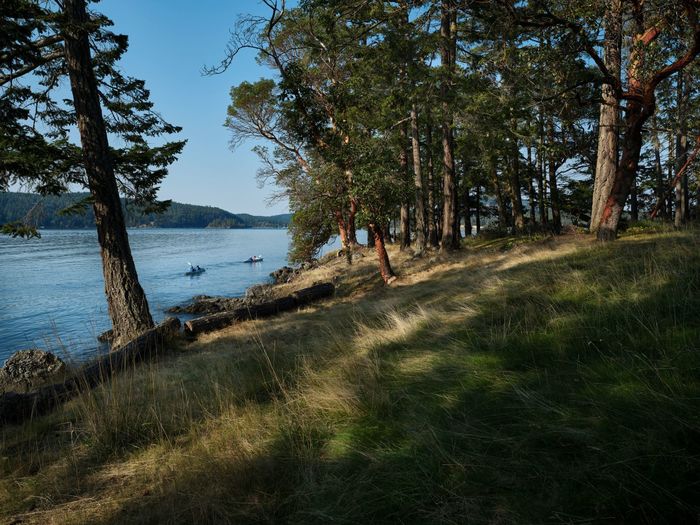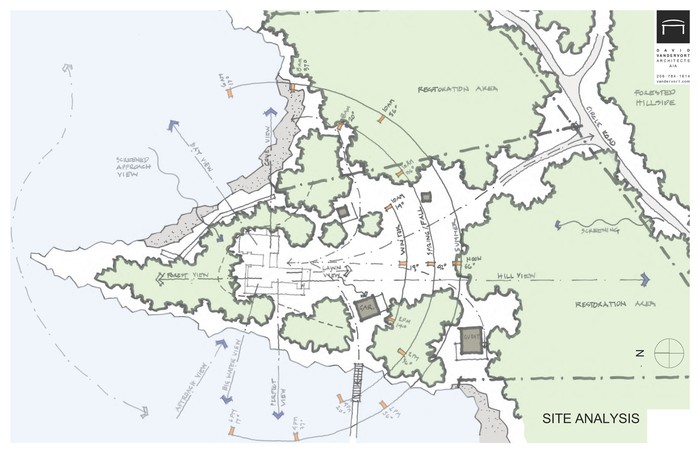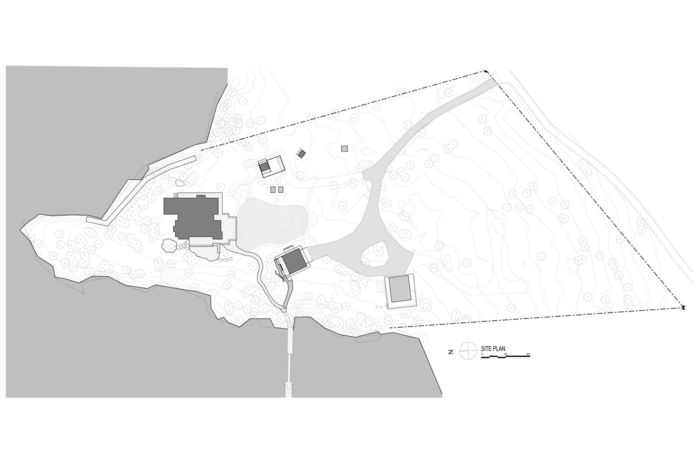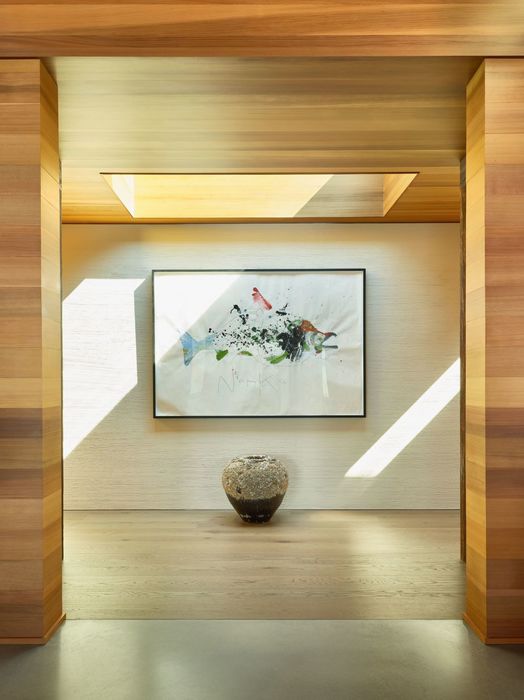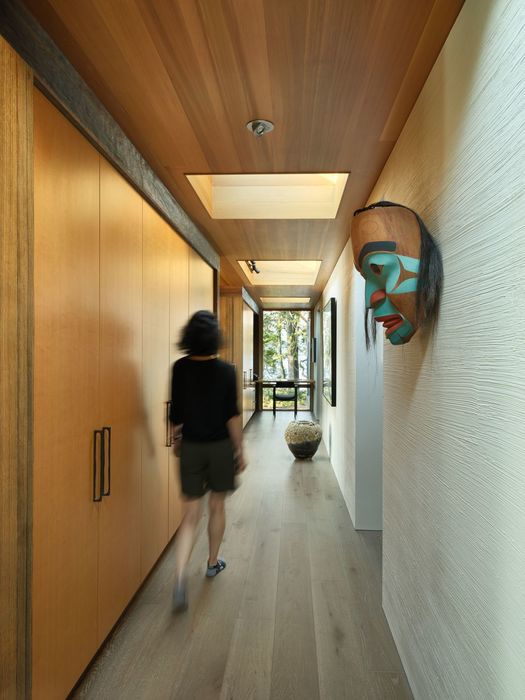This residence is located on a small island in the San Juan Islands of Washington State. This island is not served by ferry, and although there is a ring road circling the island, most visitors would arrive by boat. The site is a spectacular rocky, wooded peninsula jutting into the harbor. An existing house occupied the site and the new house was located within its footprint in order to minimize site disruption and take advantage of the views available there. The primary design goal was to engage with all these various views of the water on three sides and the upland areas of the property in a way the original house did not while functionally engaging movement around the site. Arrival from the pre-existing dock (the main arrival point), access to an existing guest house and the existing garage (which was eventually torn down and rebuilt) and connection to the outdoor spaces of the site, both natural and curated.
The result is a 2,900 sf home with the living areas facing the expansive views to the west and oriented to arrival from the dock, and the three bedrooms occupying the east side with more intimate/filtered views of the adjacent private cove.
The main living space is planned as a pavilion with a rhythm of structural timber frames creating the volume and shou sugi ban clad niches defining individual spaces within it. Each space relates to the site and view in their own unique way. The Living area takes in the “big” view, an uninterrupted expanse of the Salish Sea, as well as the forested backdrop to the concrete fireplace. The Kitchen and Dining areas meanwhile enjoy the “perfect” view, the open sea filtered by madrones, firs and outcroppings of rock. And the Family area connecting to the central lawn with the outdoor activities occurring there.
The exterior form of the house is a unique combination of asymmetric gables set at slightly different pitches to express the two wings, acknowledge the character of the views from those spaces and provide shelter from the elements. The exterior materials of the house – weathered cedar, tinted concrete and dark metal roofing - are meant to blend with the landscape so that a boat passing the property might not even notice the house tucked into the trees. Both the exterior forms of the house and its materials have a vernacular/indigenous connection – structural rhythm, gridded windows, random width siding - that relates to the variety of historical habitation of the San Juan Islands while also expressing its modernity through the clarity of the details as realized by the many craftspeople involved.
